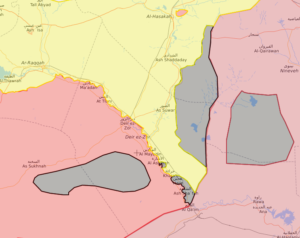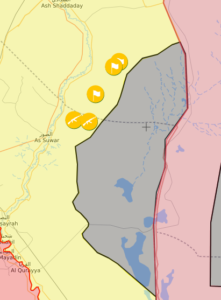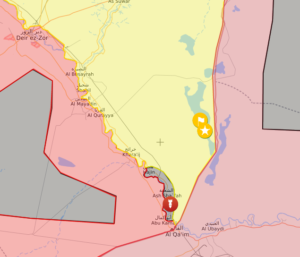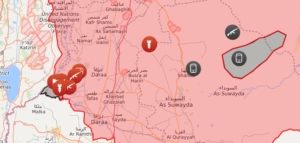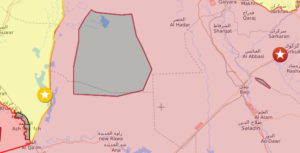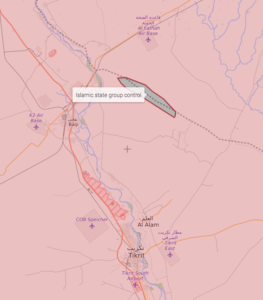China’s Type-99 combines a hull that closely resembles an elongated T-72 with a Western-style turret inspired in part by the German Leopard 2. First appearing as the Type 98 prototype tank in a National Day parade in a 1999, the vehicle was re-designated the Type 99 and entered service in 2001. At 57 tons, it comes in between the 70-ton Abrams and the 48-ton T-90 in terms of weight. Several upgrades, including the new Type 99A2 variant, boast advanced new technologies. Beijing fields nearly 500 Type 99s in sixteen armored battalions, and has produced 124 of the newer 99As so far. The type is not offered for export, though some of its technology is used in China’s VT4 export tank.
The Type 99 and the T-90 rely on a 125 millimeter cannons using carousel autoloaders descended from Soviet-era designs. This weapon proved underpowered verses Abrams and Challenger tanks in the Gulf War, but new improved tungsten ammunition leaves it capable of piercing the frontal armor of an Abrams at shorter combat ranges.
The new Type 99A2 comes with a longer barrel main gun, which in theory should impart higher muzzle velocity to sabot shells and improve their armor penetration and accuracy. It also boasts fancy new stabilizer technology.
Reportedly, China intends to eventually install a larger 140 millimeter gun on the Type 99, but early tests have cracked up the weapon. This, incidentally, mirrors Russia’s plans to up-gun its new T-14 Armata tank to a similar caliber weapon.
China has developed its own depleted uranium ammunition for its 125 millimeter gun, which it claims can penetrate the M1 up to ranges of 1.4 kilometers.
The Abrams uses a fourth crewmember to load the gun, which American tankers argue is more reliable, offers a higher rate of fire, and gives the tank a spare hand if one of the other crew members is incapacitated. However, the space needed to accommodate a fourth crew member makes the M1 larger and heavier.
The Type 99 and T-90 both can fire anti-tank missiles from the gun tube, while the Abrams cannot. (The Type 99 uses AT-11 Refleks missiles licensed from Russia). This could theoretically be useful for combat at very long ranges, or against low-flying helicopters. However, tank-launched missiles have existed for fifty years without seeing much use.
Effective sensors for spotting and aiming are arguably as decisive in tank engagements as firepower. Russia has made some strides in tank sights and thermal imagers in recent years, though the general sentiment is that Western sights and sensors remain superior. The T-90A does not carry Russia’s best hardware (some have been upgraded with French Catherine thermal sights), while the T-90MS has an improved Kalina targeting system.
China is known for its excellent electronics, and the Type 99A2 supposedly carries a new infrared tracking system that enables it hunt enemy tanks efficiently and is believed to be superior to the systems on the T-90A.
The Type 99 benefits both from composite armor, and Explosive Reactive Armor (ERA), bricks of explosives onto the tank that prematurely detonate incoming shells. The new Type 99A2 variant uses a multi-layered system thought to be similar to the Relikt ERA developed by Russia, which uses a radar to detonate the ERA before hostile shells impact. It is intended to defeat tandem-charge missiles capable of overcoming older-generation ERA.
The T-90A uses the older Kontakt-5 ERA, while the new T-90MS tanks serving in India sport the Relikt system. Though most effective against anti-tank missiles, both systems also diminish the penetrating power of tank shells.
The Type 99 also comes with a Laser Warning Receiver which warns the tank commander if his vehicle is being painted with hostile targeting lasers, affording the driver a chance to back away out of danger. Given all the videos from Syria and Yemen of tanks sitting obliviously as anti-tank missiles meander towards them (often taking 20 seconds or more to impact), this could significantly improve survivability.
The Type 99 also is believed to come with its own unique high-powered ‘dazzler’ laser designed to jam laser- and infrared-guided missiles, damage enemy sights, and blind the eyes of hostile gunners, possibly with a permanent effect. Fortunately, high-power tank-mounted dazzlers have never been used in combat before, so we have no idea how well they would work.
The Abram’s Rheinmetal 120 millimeter gun, equipped with politically-controversial M829 depleted-uranium rounds, can penetrate around 15-25% more armor. The U.S. now produces new generations of M829 rounds capable of piercing the advanced Kontakt and Relikt reactive armor systems developed by Russia (more on those below).
The author’s observation that the Type 99 is faster and less gas-guzzling than the M1A2 is, alas, probably accurate.
